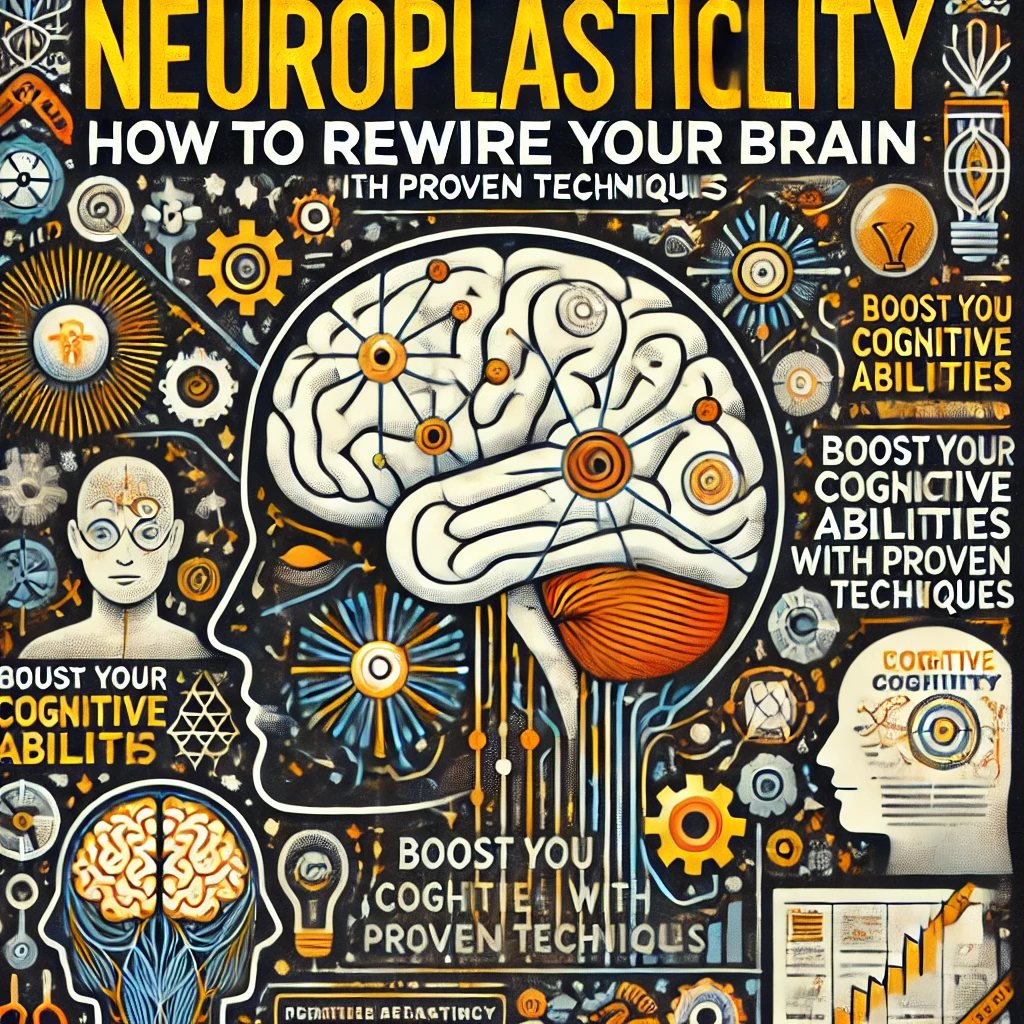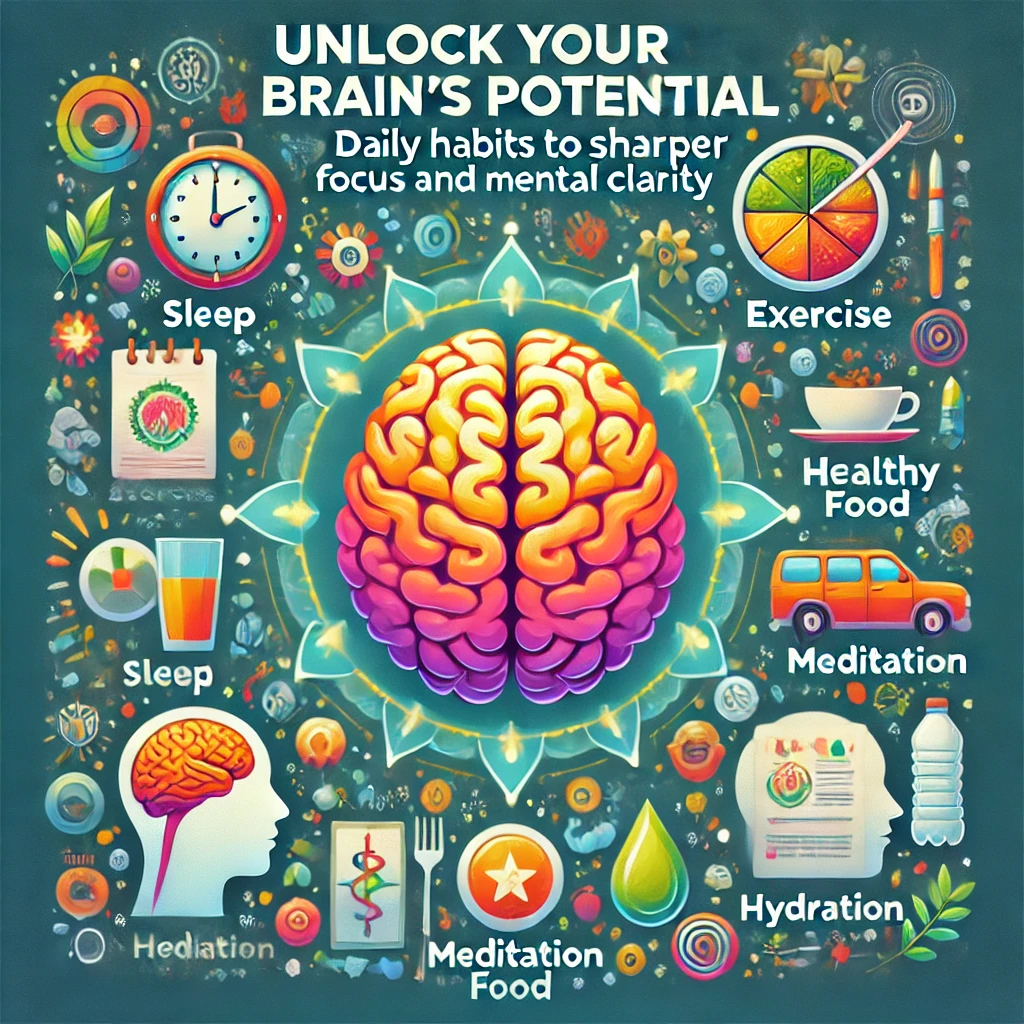Introduction
Imagine if you could train your brain to learn faster, remember better, and adapt to new challenges—just like a muscle that strengthens with exercise. The concept of neuroplasticity makes this possible. Neuroplasticity is the brain’s ability to reorganize itself by forming new neural connections throughout life, meaning we can rewire our brains to boost cognitive abilities, adapt to new environments, and even overcome challenges like stress and trauma.
In this guide, we’ll explore the science behind neuroplasticity, practical brain rewiring exercises, and ways to harness this incredible ability for cognitive growth. Whether you’re looking to increase intelligence, improve memory, or enhance problem-solving skills, these steps to rewire your brain can help you get started.
1. Understanding Neuroplasticity: The Brain’s Ability to Change
Neuroplasticity is a relatively recent discovery in neuroscience. For a long time, scientists believed that the brain stopped developing after a certain age. However, research has shown that our brains can continue to grow and change throughout our lives. Neuroplasticity allows the brain to compensate for injury, adapt to new situations, and strengthen areas of cognitive ability.
How neuroplasticity works:
- Synaptic Plasticity: When we learn something new, the synapses (connections) between neurons can strengthen or weaken, creating “memory” within the network.
- Structural Plasticity: This refers to the physical changes in the brain structure, such as new neural pathways, that occur with repeated activities and learning.
- Cortical Remapping: The brain can transfer certain functions to different regions, often compensating for areas damaged by injury or disease.
Relatable anecdote:
When I first started learning a new language, I struggled with vocabulary. But as I practiced daily, I noticed my brain adapting, making it easier to recall words. This experience made me realize that consistent effort can indeed “rewire” the brain for new skills.
2. Benefits of Brain Rewiring: Boosting Cognitive Abilities
Engaging in brain rewiring exercises has numerous benefits for mental health and cognitive function. Neuroplasticity allows you to:
- Enhance memory and learning: Regular brain training for neuroplasticity can improve memory retention and learning speed.
- Adapt to change: Neuroplasticity helps us stay mentally flexible, enabling quicker adaptation to new skills and environments.
- Build resilience against aging: Studies show that practicing neuroplasticity can reduce the risk of cognitive decline, keeping the mind sharp and resilient.
Why neuroplasticity matters:
By harnessing neuroplasticity, you’re not only boosting brain power but also laying the groundwork for better mental health. The ability to change and adapt keeps the brain active and engaged, which is crucial for long-term cognitive growth.
3. How to Rewire Your Brain: Practical Techniques
Rewiring your brain doesn’t happen overnight. It requires consistent practice and mindful engagement. Here are some proven techniques for improving cognitive abilities through neuroplasticity:
a) Learn Something New Regularly
One of the best ways to engage neuroplasticity is to continually challenge your brain with new information and skills. Learning new things strengthens neural pathways and creates new ones, promoting cognitive enhancement.
Ideas for new learning experiences:
- Language: Learning a new language is one of the best brain rewiring exercises, as it enhances memory, focus, and problem-solving skills.
- Musical Instrument: Playing an instrument engages multiple areas of the brain, including auditory, sensory, and motor regions.
- Physical Activity: Learning new physical activities, like dance or martial arts, combines movement with memory and coordination, making it a powerful way to stimulate neuroplasticity.
Example:
I took up learning the guitar, and the process of remembering chords and sequences felt like a real workout for my brain. With time, I noticed improvements not only in my musical skills but also in my ability to remember other information more easily.
b) Practice Mindfulness and Meditation
Mindfulness and meditation are powerful tools for rewiring the brain. Studies have shown that regular meditation can increase grey matter in the brain’s areas associated with memory, learning, and emotional regulation.
How mindfulness boosts brain power with neuroplasticity:
- Improves focus and attention: Regular meditation helps develop areas of the brain responsible for sustained attention.
- Enhances emotional resilience: Mindfulness strengthens neural pathways that regulate emotions, helping you handle stress more effectively.
- Reduces age-related brain degeneration: Long-term meditation has been associated with a decrease in the thinning of the prefrontal cortex, which is key for decision-making and problem-solving.
Relatable anecdote:
I started with just five minutes of mindfulness meditation each morning. Over time, I noticed that I felt calmer, my focus improved, and I was able to handle stressful situations with more clarity.
How to get started:
- Begin with 5-10 minutes of focused breathing each day.
- Gradually increase to longer sessions and explore other types of meditation, like guided imagery or body scans.
c) Use Visualization Techniques
Visualization, or mentally picturing a desired outcome or action, is another effective technique for cognitive enhancement through neuroplasticity. When you visualize, your brain activates similar neural networks as it would during the actual experience, helping reinforce those pathways.
Benefits of visualization:
- Improves focus and motivation: Visualizing success helps strengthen the pathways linked to goal achievement and self-confidence.
- Enhances learning: Athletes and performers often use visualization to perfect their skills, mentally rehearsing techniques to reinforce memory and motor skills.
Example:
Before giving presentations, I like to visualize myself speaking confidently and engaging the audience. This practice not only helps calm my nerves but also makes the actual presentation feel more natural.
How to practice visualization:
- Picture yourself successfully completing a task or achieving a goal.
- Engage all your senses—imagine how things look, sound, and feel to make the experience as real as possible.
4. Rewire Your Brain with Physical Exercise
Physical exercise isn’t just good for your body; it’s essential for your brain’s neuroplasticity as well. Exercise increases blood flow to the brain, promotes the release of growth factors, and encourages the formation of new neural connections.
How physical exercise promotes brain rewiring:
- Increases Brain-Derived Neurotrophic Factor (BDNF): BDNF is a protein that supports neuron survival and growth, helping boost brain power and resilience.
- Improves mood and cognitive performance: Exercise reduces stress hormones and boosts mood, which can enhance focus and cognitive performance.
- Strengthens the hippocampus: The hippocampus, a critical brain area for learning and memory, benefits significantly from regular exercise.
Relatable anecdote:
After I started a regular jogging routine, I noticed I could think more clearly and remember details better. It was like my brain “woke up” along with my body.
Best practices for exercise and neuroplasticity:
- Aim for at least 30 minutes of aerobic exercise 3-5 times a week.
- Combine cardio with balance and coordination exercises, like yoga, for a holistic approach to brain and body health.
5. Challenge Your Brain with Puzzles and Games
Playing brain games, solving puzzles, or engaging in other challenging mental activities can help strengthen neural pathways and improve cognitive function. Games that require strategy, logic, and memory are especially beneficial.
Types of brain training for neuroplasticity:
- Puzzles: Crosswords, Sudoku, and jigsaw puzzles challenge the brain, enhancing problem-solving skills and working memory.
- Strategy Games: Chess, checkers, and other strategy games boost cognitive flexibility, planning, and logical reasoning.
- Memory and Attention Games: Apps like Lumosity and Elevate offer brain training exercises that target specific cognitive skills, such as attention, memory, and processing speed.
Example:
I started doing crossword puzzles every morning. After a few weeks, I noticed I was better at recalling details and felt more mentally alert throughout the day.
How to incorporate puzzles and games into your routine:
- Set aside a few minutes daily for a brain-boosting puzzle or game.
- Try different types of games to challenge various cognitive skills.
6. Learn from Mistakes and Embrace Failure
The process of learning from mistakes is a powerful way to rewire your brain. Embracing failure and viewing mistakes as learning opportunities can encourage growth and strengthen resilience. When you adapt and find new ways to approach challenges, you engage neuroplasticity to create new pathways in the brain.
Benefits of learning from mistakes:
- Enhances problem-solving skills: Analyzing and correcting mistakes reinforces critical thinking.
- Builds mental resilience: Accepting failure as part of the learning process makes you more adaptable and confident in facing future challenges.
Relatable anecdote:
After struggling with a new skill at work, I realized that each mistake taught me something valuable. Instead of getting discouraged, I started keeping a journal of what I learned from each error, which improved my approach to similar challenges in the future.
Tips for embracing mistakes:
- Reflect on what went wrong and identify ways to improve.
- Avoid self-criticism and focus on the opportunity to learn and grow.
- Use setbacks as motivation to develop new strategies and strengthen your brain’s resilience.
Conclusion
Neuroplasticity offers an exciting pathway to boosting cognitive abilities and improving overall mental flexibility. By challenging your mind with new skills, practicing mindfulness, engaging in physical exercise, and learning from mistakes, you’re harnessing the power of neuroplasticity for cognitive growth.
The journey
to rewiring your brain is ongoing and requires consistent effort, but the rewards—enhanced memory, improved focus, and increased intelligence—make it worthwhile. Incorporate these techniques gradually, and you’ll likely see improvements in your cognitive abilities and mental resilience over time.
FAQ Section
1. What is neuroplasticity and why is it important?
Neuroplasticity is the brain’s ability to reorganize itself by forming new neural connections. It allows us to learn new skills, adapt to changes, and improve cognitive abilities.
2. Can neuroplasticity help improve memory?
Yes, engaging in brain rewiring exercises like learning new skills and practicing mindfulness can improve memory and enhance cognitive abilities.
3. How can I rewire my brain for better focus?
Practices like mindfulness meditation, visualization, and mental puzzles help strengthen neural pathways that support focus and attention.
4. Does physical exercise boost neuroplasticity?
Absolutely. Exercise increases blood flow to the brain, releases BDNF (a growth factor for neurons), and promotes cognitive resilience.
5. What types of games improve cognitive function?
Puzzles, strategy games, and memory-focused games can all help improve cognitive function and mental agility.
6. How does meditation enhance neuroplasticity?
Meditation increases grey matter in areas associated with learning, memory, and emotional regulation, making it a powerful tool for cognitive growth.
7. Can visualization exercises rewire the brain?
Yes, visualization activates similar neural networks as the actual experience, reinforcing pathways for focus, motivation, and goal achievement.
8. How often should I engage in brain training for neuroplasticity?
Daily practice of 10-20 minutes can yield results. Consistency is key to creating lasting changes in cognitive abilities.
9. Does learning from mistakes strengthen the brain?
Yes, analyzing mistakes helps build problem-solving skills and resilience, reinforcing neural pathways associated with adaptability and critical thinking.



